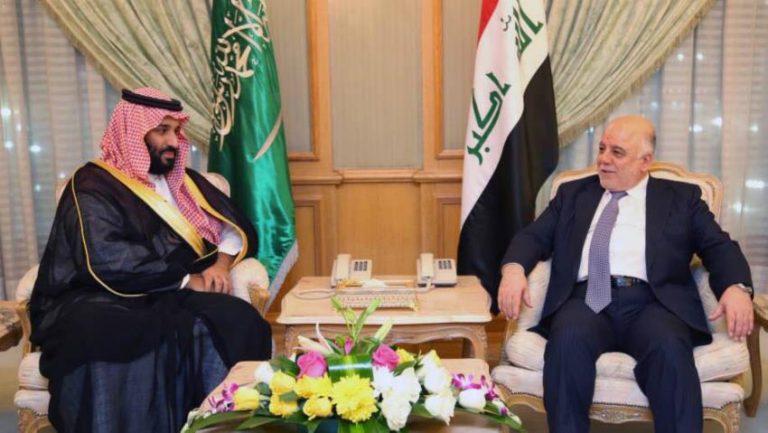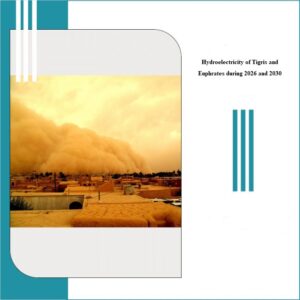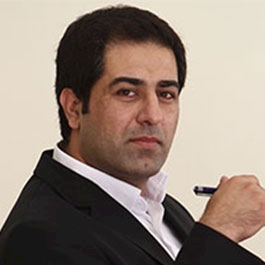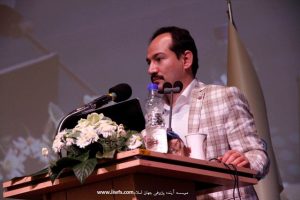Baghdad – Riyadh; the axis of stability or instability
Alireza Makki
Expert on International Relations
During the history, after the World War I, both Saudi Arabia and Iraq, the two independent states experienced a lot of ups and downs. These ups and downs and the diversity of the quality of the relations between the two major South West Asian countries can be attributed to the nature of Arab policy in modern times or to the emergence of international developments affecting regional developments. In any case, due to new issues and developments in the relations between the two countries, we must try to understand the quality and quantity of these developments and trends so that we can have the best outcomes and analysis from the developments in the South West Asia region, which is our immediate security environment. In this regard, by examining the new developments in the relations between the two countries, we try to clarify some aspects of these developments.
The fact is that these relations cannot be traced and analyzed appropriately regardless of the background of the relations between the two countries. Therefore, we should look at the history of these two relations, taking into account the internal, regional and international developments affecting their relations.
The entire history of the relations between these two countries can be divided into several periods.
The first period from the First World War to the Qassim military coup in 1958
From the coup in Iraq until the start of the Iran-Iraq war
From the Iran-Iraq War to the Persian Gulf War
From Gulf War to Saddam’s fall
And from the fall of Saddam until today
Of course, the period after the fall of Saddam, can be divided into two periods, which includes the period from the time of the fall of Saddam to 2015 and the 2015 period to date.
Baghdad- Riyadh’s axis has always been one of the drivers of the transformation of the South West Asia region to compete for leadership in the Arab world, and especially the Arab leadership of the Persian Gulf. The (above mentioned) relationship, along with the quadrilateral competition among Syria, Iraq, Egypt and Saudi Arabia, as well as the unresolved issue of the Palestinian Arabs during the Cold War, and especially after the Abdul-Karim Qassim coup, has always shaped the peculiarities of Arab politics and affected the political- security dynamism of Southwest Asia. This issue, coupled with close ties between Saudi Arabia and Western allies as well as Iran during the Cold War to ensure the security of the southern Gulf region, as well as the growing dependence of the Iraqi government on cooperation with the Eastern Bloc countries until the end of the Cold War, led to political and security rivalries between these two important Arab countries. With the withdrawal of Egypt from fighting against Israel and the total Soviet Union’s Arab allies in the Middle East, practically only two countries, Iraq and Syria, were in the front against Israel and also advocated Pan-Arabic ideas, although the two countries, Libya and Algeria, also made efforts in this regard. Thus, by joining Egypt to the Western bloc in the late 70s, Iraq and Syria, were the main Arabic states of Pan-Arabism, close to the Eastern and Arab blocs; and after the revolutionary transformation of Iran, Saudi Arabia became the largest pro-Western power in the south-west region of Asia.
If we look at the history of the relations between Iraq and Saudi Arabia during this period, we will find that the history of the relations between these two countries has been affected by the regional and international issues, and that it has differed from the alliance to hostility and even to a cross-sectional union during the Iran-Iraq war. In the aftermath of the Qassim coup in Iraq, Iran and Saudi Arabia, by creating a barrier against the ambitions of the revolutionary Iraq in the region, virtually diminished the influence of Iraq in the Persian Gulf and forced Iraq to shift its attention and revolutionary energy to the Eastern Mediterranean and the region of Levant.
In this period, the contradictions between the two sides were so high that Iran and Saudi Arabia, by supporting the Kurdish movement in northern Iraq, distracted Iraq’s attention from its eastern and southern borders, and, in contrast the Iraqi regime, provided political, security and financial support to all the opponents of these two countries; even in the aftermath of the OPEC’s hostage crisis in 1975, said by some members of the operation team Iraq has requested the executions of Iran and Saudi Arabia, oil ministers which, of course, is yet unclear.
But by the revolution in Iran, the situation was completely different, and Saudi Arabia, with financial and even military support to Iraq, during the course of the battle, dedicated a $ 25 billion very low interest loan to Iraq in direct, while also devote part of the oil production of the disputed border regions to help Iraq; and in addition by aiding Iraq to build an oil pipeline from Saudi Arabia, it helped to export oil from Iraq. These are in addition to the aid provided by the GCC (ordered by Saudi Arabia) in form of military or civilian goods, as well as providing secure air and sea routes for Iraqi military flights against Iran.
This process was reversed by the Iraqi invasion of Kuwait and Saudi Arabia, coupled with the emergence of U.S. policy of dual containment– that was set up in 1993 designed by Martin Indyk (former US ambassador to Israel) in the Clinton administration’s National Security Council which was written by Anthony Lake in the Foreign Policy Magazine- Saudi Arabia, along with members of the Gulf Cooperation Council, placed Iraq under the most severe economic and political blockade.
In the aftermath of the fall of Saddam, Iraq was plummeting in the sectarian violence, and during this period, US troops could not do much to stop the clashes.
Meanwhile, Zalma Khalilzad, US Ambassador to Iraq, succeeds to organize a meeting between Prime Minister Nouri al-Maliki and King Abdullah of Saudi Arabia; and in private talks, Nuri al-Maliki apparently had made some promises to the Saudi government, who allegedly had failed to implement them, which included the non-execution of Saddam Hussein, the decline in the intensity of purging Ba’athism, and many other demands that exacerbate Saudi Arabian suspicions to the Nuri al-Maliki’s government.
In any case, with the cooperation of Saudi Arabia and of course, with the plans of General Petraeus to form Sunni forces in order to confront the so-called “Awakening Councils”, in 2007-2008 the trend of violence in Iraq went to calm down; but again with the withdrawal of US forces in 2009, and, of course, because of the talks related to the Iraqi elections the same year, which led to the reign of Prime Minister Nouri al-Maliki, the violence, again, intensified in Iraq. In the meantime, many in the region accused Saudi government and called it responsible for exacerbating violence, which would have led to further blurring of relations. However, this trend continued until the emergence of ISIL and the fall of Iraqi cities one after another and, of course, political developments in Baghdad, which led to the withdrawal of al-Maliki from his power and his succession to Heydar al-Abadi. In this era, Ebadi began active diplomacy to gain political, security and economic support at the regional and, indeed, international level, in fight against the Takfiri terrorism of ISIL. Since then, we are witnessing a change in the course of relations between Baghdad-Riyadh, because the two sides sought to reduce disagreements and expand ties by understanding the security and strategic necessities of communication.
In this regard, in 2015, after 25 years of political breakdown between the two sides, for the first time, with the presence of Adel al-Jubeir, the Iraqi embassy reopened in Iraq, and at that time there were many talks on Saudi’s economic and security support for Iraq in course of the fight against terrorism. Following Riyadh’s introduction, Thamir al-Sabahan, a senior security official, to the Saudi embassy revealed that Baghdad is still a security and strategic issue for the officials in Riyadh rather than being their neighbors. Thus, after reopening the embassy, the major Saudi activities in Iraq, continues to focus on security issues and activities rather than common neighborhood and economic issues and other relationships. The issues continued so far that the Saudi ambassador, dimmed relations between the two sides by his statements about the influence of the Shiites and Iranians in Iraq, as well as other forms of corruption in the internal affairs of Iraq, and eventually led to his dismissal by the minister of Iraqi Foreign Minister.
Considering the matter, the lack of a new ambassador from Saudi Arabia to Baghdad demonstrates the problems and differences between the two sides in the field of regional relations as well as in Iraq’s internal affairs. But at the same time, in 2017, with regard to regional developments, Riyadh has begun a series of moves that could be seen as a kind of rethinking and revision of Riyadh’s policies toward Baghdad, which includes, inviting and welcoming Iraqi political officials in March 12 and agreeing to expand cooperation and stop hostile allegations against each other; negotiations by Undersecretary of State for Iraq, Nazir Khairullah, discussing on economic, security and cooperation in tourism; the visit of the Iraqi prime minister to Saudi Arabia and the establishment of the Iraqi-Saudi Strategic Cooperation Council and the agreements on the expansion of economic and political relations and the opening of Jemima border and Saudi Arabia’s investment throughout Iraq.
Besides, it seems that recent developments in Iraq and Saudi Arabia are based on an understanding of the mutual necessities, which can be summed up in several axes as below.
1- Riyadh’s retardation in Iraq during the past 15 years from its regional powerful competitor, Iran
2- The need of Iraq for investing as well as Saudi’s penetration among the Sunnis for reconstruction after the end of ISIL
3- The need for both sides to stabilize oil prices
4- The need for both sides to consolidate the common borders and resolve the contradictions
5- Iraq needs to Saudi’s security cooperation in fighting against insurgent and terrorist groups
6- Iraq needs to stay away from Iran’s and Saudi’s proxy conflicts in the region
Such mutually supportive demands force both sides to expand cooperation and resolve, or at least to unmask the past disagreements.
But the most outstanding and interesting point of view is from analytical perspective of Sadr movement’s leader visit, invited officially by the authorities in Riyadh to Saudi Arabia, that makes a big question about the nature and quality of Saudi Arabia’s relations with Iraq’s Shiites in general. There are many speculations and analyzes on the reason and quality of this visit, which can be summarized in three axes.
1- Sadr’s efforts to expand his foreign relations and to gain privilege in Iraq’s domestic politics by expanding his supporters base among the Sunnis
2- Sadr’s efforts to achieve the position of the key link between the Shiites of Iraq and the Arab states of the region
3- Saudi attempt to rebuild its relationship with the Shiites of Iraq as the main political force in Iraq after Saddam Hussein, to compensate the lost opportunities in Iraq and to compete with Iran after 25 years of absence in Iran
Some scholars point out that Sadr’s journey to Riyadh has taken place with the knowledge and consent of Tehran and they believe that this trip is a ground for reducing the contradictions between Iran and Saudi Arabia to undermine bilateral tensions; and others regards the journey as a signal of Sadr’s separation from Iran in order to become a national and trans-national figure with a social status throughout Iraq. Of course, we all know that for many years Sadr was backed by Iran and it was the same supports of Iran in various dimensions, which led to the rise of Muqtada al-Sadr in the Iraq’s political arena; especially after the conflicts in aftermath the fall of Saddam, and after the battle in Najaf to expel members of the Jaish al-Mahdi Army in that city, as well as the Basra battle in 2008. But it seems that, given the recent developments, the view of the second group, which is based on Sadr’s efforts to establish and maintain a distance with Tehran, is more thoughtful, especially given the fact that, since the Iraqi parliamentary elections in 2014, Sadr’s disagreements with Tehran on Al-Maliki’s succession has intensified, and worsens every day, to the extent that, in many cases, Moqtada al-Sadr questions the policies of the Islamic Republic of Iran in Iraq. From this angle, the issue of receiving $ 10 million in aid from the Saudi government to help displaced people of war and terror in Iraq seems to be more understandable. In fact, Sadr tries to approach Riyadh with a reasonable distance with Tehran, and both to enjoy the benefits of Riyadh’s financial assistance and to expand his social base among the Sunni people, while maintaining the minimum required for relations with Tehran to protect Iran’s political, security and financial support when needed; and eventually to establish itself as an interface between Iran and Saudi Arabia, independent of the Iraqi government, which will surely be of great value for Sadr. In sum, it seems that the Saudi government, also realizing the necessity of fundamental change in Iraq, has concluded that Riyadh needs to engage with Iraq at both the political and official levels, as well as at the social level and effective groups, tries to communicate simultaneously with the Iraqi government directly and with the Sunnis of Iraq, as well as with the Shiites through Sadr, to compensate their backwardness.
As a country hunted by numerous wars and crises over the past decades, as well as the war with the Takfiri group of ISIL in widespread parts of Iraqi territory, in addition to necessary financial and economic assistance, Iraq also needs to be accepted in the Arab community in order to secure wider regional and international support for political, security, and economic cooperation.
**The views expressed in this article are those of the author(s) and do not necessarily reflect the views of IIWFS.





